I like urban fantasy. A lot. I write it, so it’s a good thing that I enjoy it, but I’ve been reading it since it really began to become a thing, and have a fairly broad knowledge of the genre. I was asked, after a Twitter thread about awesome urban fantasy authors, whether I would be interested in writing up a recommendation post. Well, sure; any excuse to talk about the books I love! But first, a few caveats:
- This is not a list of the very best, you must read this, absolutely essential urban fantasy books. This is a list of urban fantasy I would personally recommend.
- By the same measure, if something is not included, I didn’t forget it, I didn’t include it. Now maybe that means it’s something I didn’t read. Or maybe it means it’s something I didn’t enjoy. Since this is not “Seanan starts a feud within her genre,” I will not be specifying which is which. When reading and enjoying this article, if moved to comment, please don’t comment with “BUT YOU FORGOT…” I assure you, I did not.
And now, with no further ado, I present to you,
Seanan’s Personal Top Ten Urban Fantasy Books For Adults (Because There’s So Much Awesome YA That We’d Be Here All Week)
Tam Lin, Pamela Dean. This could be a contentious entry, since there’s some question as to whether Tam Lin is urban fantasy or modern adult fantasy. The two genres are siblings, no question, and exist closely enough together that sometimes works can slip from one into the other. To me, Tam Lin is the quintessential urban fantasy: it pre-dates a lot of the genre conventions that we have today. No leather pants or sexy shifters here. But there is a strong female lead (Janet), a beautifully thought-out parallel history, and a deep introspection into what happens when the world of the fantastic collides with the world of the every day. If you follow my essaying around, you’ll see me mention this book a lot. There’s an excellent reason for that.
Buy the Book
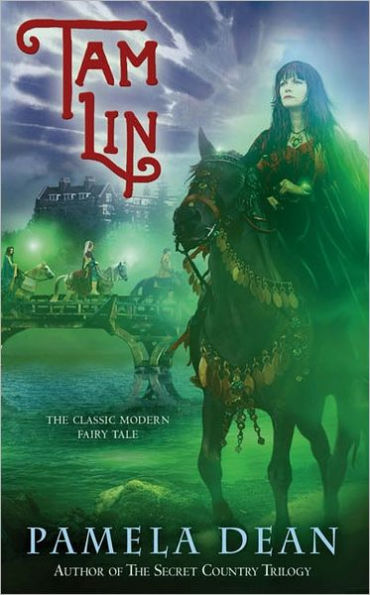

Tam Lin
Our second contender is also an adaptation of the old English ballad of Tam Lin, although mixed liberally with Thomas the Rhymer: Fire and Hemlock, by Diana Wynne Jones. This is another book that pre-dates the modern definition of “urban fantasy,” and so is incredibly whimsical and unpredictable to the modern urban fantasy reader. I think I read it five times before I fully understood the ending (and I’m not 100% sure I understand it even now). This book was foundational to me: I quote little bits and pieces of it in my daily life, and I would be someone else if I had never read it. (Being a foundational text isn’t the only requirement to be one of my favorite urban fantasy works—The Last Unicorn and The Stand will not be appearing on this list.) Deftly written, meticulously fair, and very aware of what it means to be kind, this book is what I aspire to every time I tell a story.
Buy the Book
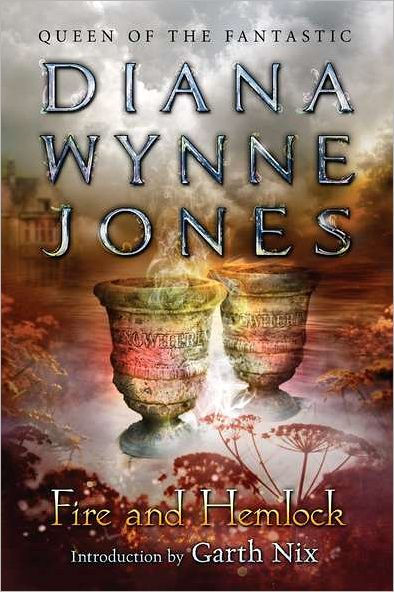

Fire and Hemlock
War for the Oaks, Emma Bull, is probably the first book on this list that most modern readers of urban fantasy would recognize as belonging to the genre, even as its tropes and story beats are shallowly drawn by today’s standards. Which isn’t to say that the story is shallow—just that those tropes had yet to be entirely defined, and in fact, this book was key in defining many of them. On such things are foundations built. This is a classic of the genre, a seminal work that defined the path the rest of us would be walking for years, and deserves to be held up and recognized as such.
Buy the Book
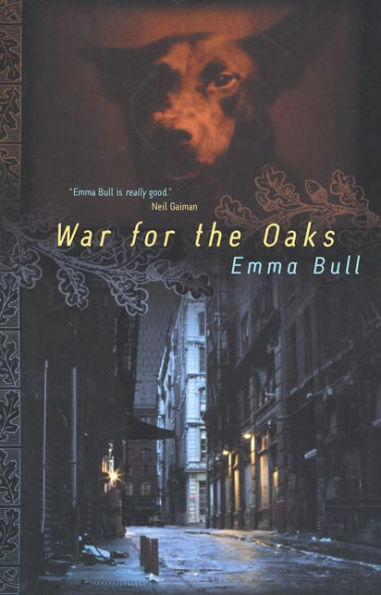

War for the Oaks
Summon the Keeper, Tanya Huff. If I were asked to populate a panel with the fairy godmothers of modern urban fantasy, Tanya’s name would be the first one I put down. She wrote a vampire detective when that wasn’t a cliché. She helped to shape and establish many of the tropes we still work with today. And she turns them all on their heads in this deft, funny, unique, and uniquely Canadian urban fantasy setting. The cats who assist her Keepers over the course of the series are all based on real felines belonging to Tanya and her wife, Fiona; the death of the last of the Keeper-cats in the real world brought about the end of the series, which is sad but understandable.
Buy the Book
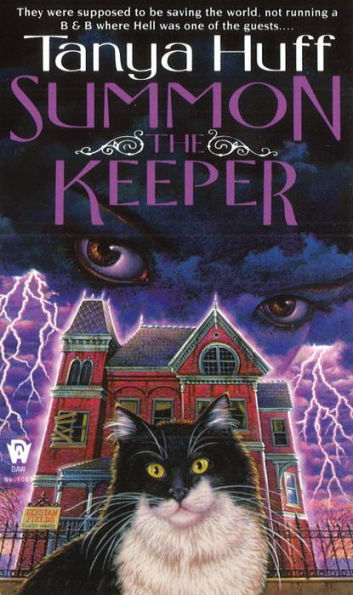

Summon the Keeper
The Jill Kismet series, by Lilith St. Crow, is one of those that never seemed to me to get the traction and attention it genuinely deserved. The fifth book, Heaven’s Spite, has possibly the bravest, most true to the character and story ending I have ever encountered in urban fantasy. It takes guts to do what St. Crow does here, and she makes it look and feel so effortless that I am still in awe. Make sure to have book six on hand if you decide to take the plunge, because that is not an ending you want to be forced to process any longer than you decide to.
Buy the Book
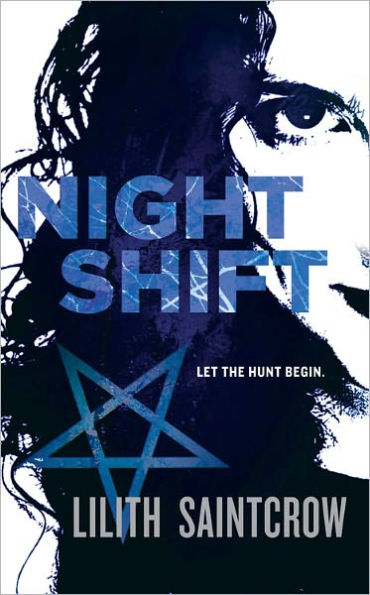

Night Shift
Dimestore Magic, Kelley Armstrong. This is technically the third in her Women of the Otherworld series, and you should probably start with book one, Bitten, if you want the story to play out the way the author intended. But damn, I love Paige. Straddling the line between urban fantasy (focused more on the adventure and the drama at hand) and paranormal romance (a sibling genre adhering to several romance conventions, including a guaranteed Happily Ever After), this series shifts narrators every few volumes, which brings us to my beloved Paige, witch and coven-leader and beleaguered problem solver. The whole series is worth your time and attention, being beautifully, brilliantly written.
Buy the Book
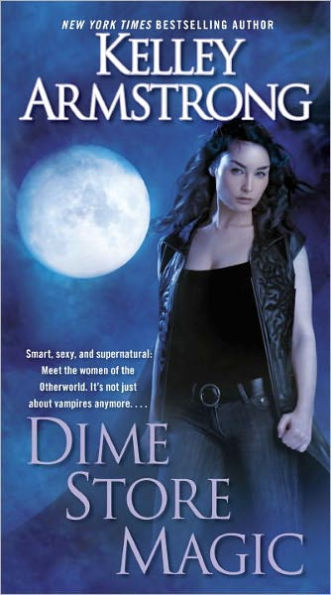

Dime Store Magic
A lot of my selections have been made on the basis of “this sets you up for a wider appreciation of the genre,” since when I’m talking about urban fantasy, I want people to understand just how we got to where we are today, and just how big our tent is (it’s a pretty big tent). And it is with those things in mind that I add Laurel Hamilton’s Guilty Pleasures to this list. Anita Blake was among the first police investigators to show up at our party, and she paved the way for a great many more. She was sharp, cynical, and gloriously unique, even as these days, she looks like just another kick-ass heroine in leather pants. The later books include a lot of graphic, extremely detailed erotica, which isn’t everyone’s cup of tea, but which still doesn’t tip the series over into paranormal romance—make no mistake, we have never been promised a happily ever after.
Buy the Book
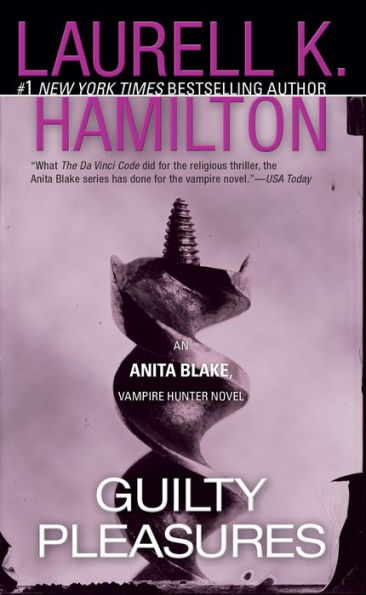

Guilty Pleasures
Rivers of London, published in the US as Midnight Riot, is the first book in stellar Rivers of London series by Ben Aaronovitch. These books are fascinating and wholly unique in their magic system and cosmology, pulling very heavily on the folklore and folk tales of London, and the massive network of tributaries formed by the River Thames. Our main character, Peter Grant, is an officer with the Metropolitan Police who falls into the seedy underworld of magic that runs through the city. He won’t be the last police officer on our list, either, considering…
Buy the Book
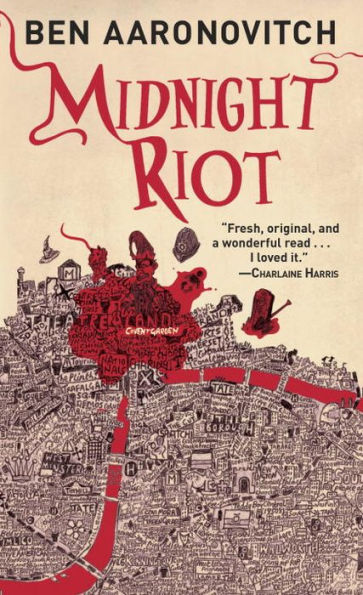

Midnight Riot
London Falling, by Paul Cornell, is the next book on our list. Superficially, this book looks a lot like Midnight Riot, being about the interaction between the police, the supernatural, and the city of London. In execution, however, these two books (and two associated series) couldn’t be more different, and that’s why I am more than happy to recommend them both as exquisite examples of what the genre is capable of.
Buy the Book
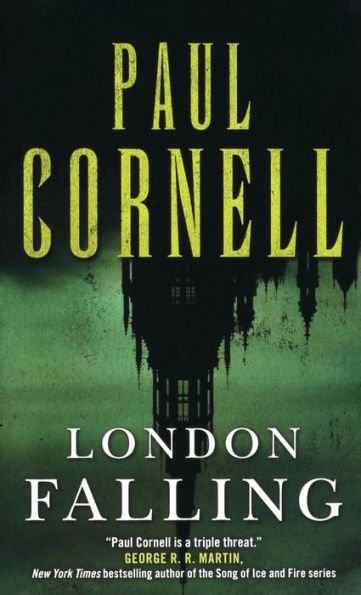

London Falling
The last book on tonight’s list is a departure from the police procedurals and detectives that have come to dominate the genre: a librarian. A librarian from an order of magical librarians tasked with protecting the world from danger. Specifically, Isaac, the hero of Libriomancer, who may be all that stands between humanity and the dangers of the written word. This is another one that pushes the definitions a bit, which is, I think, a good thing; once a genre or sub-genre really settles into its conventions, it can be difficult to break its self-imposed rules. This is a fabulous series, light, humorous, and very aware of the problems with the genres it stands in conversation with.
Buy the Book
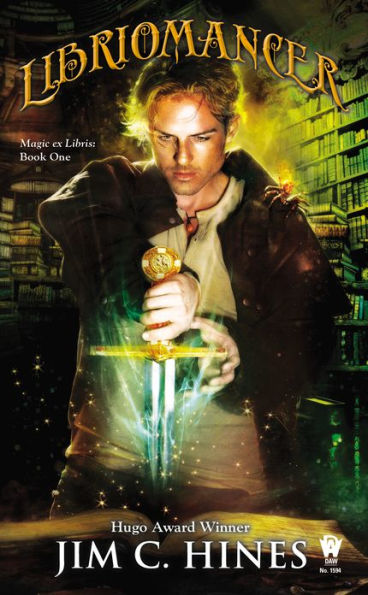

Libriomancer
So there: my top ten. I didn’t forget anything, although I may have left a few things off. Urban fantasy is a big, complex circus, full of diverse and entertaining acts, and if you haven’t already been to see our midway, I hope you’ll make time for a visit.
Originally published in July 2019.
New York Times bestselling author Seanan McGuire is the author of the October Daye urban fantasy series, the InCryptid series, and several other works, both standalone and in trilogies. She lives in a creaky old farmhouse in Northern California, and was the winner of the 2010 John W. Campbell Award for Best New Writer. In 2013 she became the first person ever to appear fives times on the same Hugo ballot. Her latest standalone novel, Middlegame, is available from Tor.com Publishing.











I love all these except for Tam Lin, which I missed somehow. I’ll have to check it out. Thanks for the recommendations!
Because Tor never links the old article, here you go: https://www.tor.com/2019/07/23/seanan-mcguires-personal-top-ten-urban-fantasy-books-for-adults/
Note that the Dresden Files exclusion was heavily discussed and debated in the comments and there was something of a blowup in the fandom about it.
Thanks for the list. I’ve read several and enjoyed them, Dime Store Magic, Rivers of London (Midnight Riot in the US) and London’s Falling. Just one comment on the last though. The series was not complete, it was intended to be 5 books but the publisher cancelled after book 3 (Who Killed Sherlock Holmes). In my opinion the series was picking up nicely but to date the author will not write/publish the remaining books. Ended on a bit of a cliff hanger but I wouldn’t recommend starting the series now as it doesn’t look likely to be completed.
@Austen: There’s no Dresden Files “exclusion,” since that implies that it was left off for personal reasons or because I was somehow providing a community resource and owed it a slot. I read the first two, I didn’t enjoy them, and then when my own urban fantasy series started up, many Dresden Files fans were deeply cruel to my work because my first book lacked the emotional complexity of Butcher’s seventh. I never went back to the series. Of course it’s not going to make a list of my personal favorites. But that doesn’t make this an “exclusion,” because the slot was never Dresden’s to begin with.
Thanks for the recommendations. I have read many of these but not all, I will definitely be reading more. Thank you for not making it a YA list. Those are fun, and generally a quick read, but as most of us know life doesn’t end when you turn 19.
@@.-@ Seanan – Sorry, I should clarify. I meant to point out that, yes, the Dresden Files didn’t make your list and that it was already discussed, with the usual grumpiness of the fandom. I pointed it out so it wouldn’t get brought up again. Thanks for the list!
@@.-@: Wonderful list! I have not read any of your Urban Fantasy yet, but hope to do so soon. I have absolutely loved Wayward Children and plan to fill out my shelves with with the rest of your body of work.
Seanan. Thank you. Will have to check a few of these out. Totally agree about Jill Kismet, those books are incredible, especially in Omnibus form. Personally I’d recommend Michelle Sagara’s ‘Cast’ series, a bit more ‘fantasy’ with dragons and hawk-people on the urban police force but a joy to read, think it’s in its fifteenth (?) book right now.
You missed Charles de Lint
I squeed at the inclusion of both Tam Lin and Libriomancer. I adore both books, and it makes me giddy to see them get some love.
I thank you for the inclusion of Lilith Saintcrow: I read the Dante Valentine books years and years ago, and I always intended to pick up the Jill Kismet books, but I forgot. In a delightful coincidence, the series omnibus is currently available on Kindle for $3.
I would add Neil Gaiman’s Neverwhere to the list but agree with the others for sure, although I did quit on the Anita Blake books after they moved into erotica. I am also very fond of Patricia Briggs’ Mercy Thompson books.
I’m delighted to see Tam Lin at #1, as it’s on my top ten list of favorite books, ever. :)
@kjcurly, a friend of mine got me started reading the Anita Blake books after the 4th or 5th came out, and was then dreadfully embarrassed later once they took that turn.
My flatmate and I used to devour them (objectively terrible writing, but great storytelling!) until they became more porn than plot. I can’t remember which was the last one we read (it would’ve come out ~15 years ago now), but he had brought it with him to read while he was proctoring an exam, and he later said he was too embarrassed to read it while in a room with students!
Ahh, the Dresden Files thing about book one and book two, yeah those aren’t the greatest books :)
Sorry to see things blew up in the comment section
So many versions of Tam Lin in early / 1980s urban fantasy. How interesting.
Am I misremembering, or was there some very problematic elements of grooming, sexual and otherwise, in the Jones ? And that this was part of the plot, but no less squicky because of it. And in any case, an accurate depiction of British gender politics up until very recently (15 years or so), see for example the 2009 film ‘An education’, from the Grauniad journalist’s memoirs of her childhood.
Superb book, and many jagged edges in it.
@6: Ah, that makes so much more sense! Thank you.
@9: No, I did not. Not only is this specifically a list of personal favorites–and he is not a personal favorite–I would class him as more Modern Fantasy than Urban Fantasy. Yes, some of his work includes place-as-character (most especially his Newford works), but the feel of his books as a whole does not fall under the UF umbrella.
@15: Whether you see it as grooming or a very true to the source material effort at saving his own skin, Tom definitely did latch onto Polly when she was too young.
Thank you so much for the recommendations! I love all of your series (haven’t checked out Mira Grant yet), and anxiously await new releases. I recommend them to every one I know. In your oh-so-copious spare time, I would gently suggest you try Dresden again. And please bring back the Aeslin mice if at all possible!
If you like the Emma Bull’s “War for the Oaks,” there’s the Borderland stories/books (if you can find them) by Emma et al. Is 1880’s Tombstone (AZ) considered urban? (“Territory” by Emma Bull.)
I love that Lilith Saintcrow is mentioned! I have loved a lot of her work and have never understood why she hasn’t gotten more attention.
Is Ariel by Stephen Boyett an urban fantasy? I’m in my mid-50s and I think when urban fantasy got popular I sort of dodged it for various reasons, but Ariel (and War of the Oaks) are two that I remember from the earlier days and enjoyed.
If there was ever any doubt that Seanan and I overlap on certain wavelengths, it’s dispelled every time I see this list. The first three on this list are EASILY among my favorite books of all time (and are books which shaped me as a teen and in college). Tam Lin and War for the Oaks are, to me, perfect in many ways as exemplars of the field, and they helped set the stage for urban fantasy as we know it to this day. (And the -magic- of the writing in both books is downright transformative…)
I’d toss in at least -something- by Charles de Lint, even if his work can be considered more magic realism than urban fantasy–his stuff is fantasy which occurs in urban settings, after all, and his Newford stories form a fascinating tapestry of short and longer fiction, breathing life into a fictional city until it stands on its own as well as any real life setting, populated by myriad mundane and magical characters. But as noted above, de Lint is almost a grey area for urban fantasy because he comes from a different school of writing than many of the ones on this list.
To expand on this list a little more, I’d suggest looking for some of Mercedes Lackey’s early urban fantasy–either her Diana Tregarde books (which skewed towards dark fantasy) or her SERRAted Edge series (Elves and race cars!) or her Bedlam’s Bard series (elves and music!) While I wouldn’t necessarily call them the “best of,” they also helped define urban fantasy in the mid-90s and early 2000s… and they feel almost woefully forgotten nowadays. (Oh god, how time has flown…)
Still, there’s not a single book on this list I’d discount out of hand.
Someday, I’d love to see someone do a deep dive into the urban fantasy series which came and went between, say, 2005-2015, as I feel like that’s when we saw a -lot- of stuff come out of the major publishing houses, and where are authors like Mark del Franco, Rob Thurman, D.D. Barant, and Jes Battis now, and I’ve gotten sidetracked again…
Tam Lin, Thomas the Rhymer, Elliots Four Quartets, Diana Wynne Jones. With that imprimatur, Fire and Hemlock should have been a sure hit.
I couldn’t finish it. So many people love it; I tried several times. Once starting in the middle. The short of it is, I don’t like those people. I don’t want to spend time with them.
In some book, perhaps by Mercedes Lackey, an elf is stuck in mundane reality. He says, “People ask me if I am here to start a war for the oaks. Why do they keep asking that?”
I’d be curious if you could sketch out what you think is the difference between “urban fantasy” and “modern fantasy”. You mention that Tam Lin is ambiguous in this respect, and say in a comment about Charles, “I would class him as more Modern Fantasy than Urban Fantasy”.
(I’m not attempting to make an argument, I’m just genuinely confused as to what you mean by “Modern Fantasy” as opposed to “Urban Fantasy”.)
@23: In short form, no, because I have books to write and don’t have time to write a free essay in the comments.
In (slightly) longer form, it’s more feel than anything else. “I can’t tell you what pornography is, but I can tell you I know it when I see it.” It’s how a story fits together, and it’s how the stakes and lines are drawn. Which means that two people can have different definitions of where a work will fit (see also Michael Jones at @21 arguing again for de Lint, which I remain firmly opposed to.) Since I am not The Boss of Urban Fantasy, my opinion carries no more weight than anyone else’s, but since this is my list of personal favorites, only my opinion matters.
Thank you so much for this list! I now have even more on my to read list!
Seanan and I could probably argue for hours and hours over how to define/categorize modern (contemporary) fantasy, urban fantasy, magical realism, and so forth, as what you really have is a really wild set of parameters which start at “magic in a modern setting” and then differ based on levels of subtlety, incorporation of the themes, cultural influences, and general feel. I mean, where does urban fantasy stop and paranormal romance start? (Probably as soon as the romantic elements overshadow the others and you realize the werewolves and vampires are just fancy hats for a story about finding love…)
In one sense, urban fantasy is more in your face–wizards slinging fireballs while kicking down doors to rescue lost children in the gritty streets of Chicago, or ballroom dancers investigating cryptids while avoiding monster hunters–while modern fantasy is either a catch-all for a much larger family of themes, or a specific style in its own right.
Lots of people have spent lots of time trying to set the boundaries, and sometimes it seems like there’s no actual way to define them without making someone unhappy.
But let’s look at two of the books on this list, and I can explain, to me, why each feels the way it does.
War for the Oaks is straight-forward urban fantasy. A mortal musician is caught between two warring factions of the Fae as they battle for symbolic and territorial control of Minneapolis. The story is set against familiar landmarks and takes place in a real landscape, but the magic is quite pronounced, the supernatural/magical creatures are defined and explicit, and the story has some significant stakes, both personal and larger scale. The outcome could change the way the city feels and acts for years to come.
Tam Lin is slow-burning, subtle, and ambiguous. A college student spends four years at school, dealing with relationship and academics and friendships, while a quiet supernatural story plays out under the surface. The magical elements are often rationalized away or overlooked, the supernatural is influential but almost never explicit, and the stakes remain personal. Tam Lin is urban fantasy in that it contains fantasy elements in a contemporary setting (Blackstock College is inspired by a real Minnesota college of Pamela Dean’s own experiences, and the story is heavily rooted in the time and place). But it’s also ambiguous–sure, it’s based on a traditional Scottish ballad, and quite excellently, but it’s easy to dismiss 95% of the supernatural for 95% of the book, and yet those magical elements still drive the story. I’ve argued at length about this being a form of magical realism or contemporary fantasy. But both answers are correct: it’s urban and contemporary.
Both of these books, by the way, came out of the same time and place–War for the Oaks was released in 1987, Tam Lin in 1991. Both authors–Emma Bull and Pamela Dean–were part of the same writing group, the Scribblies, along with Will Shetterly, Steven Brust, Kara Dalkey, and Patricia Wrede, and both books were edited and championed by Terri Windling (who was a HUGE part of promoting the early wave of urban fantasy in that time frame.) So they’re even more closely related than you might think.
Really, even after all that, it comes down to personal preference and gut instinct to define these things. I’ve spent decades trying to find a satisfactory answer, and it keeps getting more complicated. The genre is big enough to incorporate a multitude of themes, flavors, and levels of supernatural inclusion, whether you like your magic to be a whisper in the wind, or a fireball in the face.
And now someone else can come along with an entirely different, yet entirely correct, set of definitions and opinions! :)
Seanan @@@@@ 24:
If you ever happen to feel like writing that essay as an essay, and have Tor begging you for another article, I think you’d have lots of interested readers.
There are different ways to slice and lump categories, and I seem to lump these books into categories differently, like some of the commenters – but I like learning different ways to see things!
In the meantime, you have given me yet more books to go on my enormous TBR, for which I thank you! I seem to be on a horror kick the past year – I’m sure I can’t possibly think why. Has Mira Grant done any personal favorite contemporary horror recommendations lately?
I’ve also read Fire and Hemlock dozens of times, starting when I was not much older than Polly in the beginning of the book. I too have struggled with the ending, although I love it. My personal feeling is that it’s 2 parts intentional enigma, and 1 part Jones’ tendency to end many of her books very abruptly and without denouement. I have no idea if this is true, but I always imagined Jones’ editor snatching the manuscript from her hands the second it could remotely be called “done”, either because Jones struggled with deadlines or just to appease a voracious public. But a lot of her books seemed to end very suddenly to me, and Fire and Hemlock was definitely no exception.
Tam Lin is one of my most constant re-reads. I’m glad to see it here, still full of glamour and not fading into obscurity. Thank you for loving it too.
Typographical note: Because publishing is weird, readers should be aware that “Lilith Saintcrow” and “Lili St. Crow” are in fact the same author, although the bylines are attached to different series; the Jill Kismet books are filed under “Saintcrow”. Some search engines may automatically compensate for the spelling wackiness, but others may not.
#21-27 (more or less):
“Urban fantasy” — or “urban faerie”, to note an early alternate coinage — is definitely a fuzzy term. The “urban faerie” variant is more reliable as an equivalent to “modern fantasy”. I’ve seen it argued that “urban fantasy” should be closely defined by the “urban” — that is, that a focus on or setting in a large city is the essential characteristic of the category. I find this position something less than useful, as it (at least theoretically) suggests that War for the Oaks and the subset of Discworld novels set firmly in Ankh-Morpork ought to be placed under the same umbrella. Meanwhile, by that standard, a newer work such as Barbara Ashford’s Spells at the Crossroads, fails to qualify because Dale, Vermont is too small…even though the Ashford volume is absolutely a lineal descendant of the “urban faerie” school.
Whichever definition you adopt, though, there ought to be no argument that Terri Windling, whom Michael mentions above, is very much the founding editor of the modern/urban fantasy category. As I recall, she was Charles de Lint’s primary editor for many years as well as a mentor to the Scribblies, and was with Ellen Datlow the co-compiler of Year’s Best Fantasy & Horror anthologies over a long period. It’s probably not stretching too far to suggest that Windling is as important to the history of commercially published fantasy as were Lester and Judy-Lynn del Rey (founders of the Del Rey Books imprint) to that of science fiction.
On Charles de Lint: As it happens, I think both Seanan and Michael are right — the thing is, de Lint is a moving target. He started out in classic/high fantasy (Riddle of the Wren and the “Cerin Songweaver” story cycle), but then came Moonheart, which I still think is his single best work — and Moonheart is clearly and unequivocally three kinds of fantasy at once: urban (it takes place largely in Ottawa, Canada), modern (its protagonists are very much from the here and now) and portal (Tamson House is full of them). Indeed, I’d argue that Seanan’s own Wayward Children series is in some senses a direct descendant of Moonheart. But de Lint didn’t stay in urban fantasy for long; he turned next to adapting fairy tales and folklore — sometimes against modern settings, sometimes not — and then settled into the “Newford” cycle, which I’d put all the way over in the “magic realism” category.
On Mercedes Lackey: Michael and I are in substantial agreement here. The Diana Tregarde books were a decade or two ahead of their time, and (I think) suffered a severe case of mis-marketing when they first appeared. They’re definitely in the same ballpark as today’s urban fantasy/paranormal suspense, and should have been far more successful than they’ve been. (See also Sacred Ground, a stand-alone with a Native American heroine, which I consider one of Lackey’s best works.)
Likewise, the “Bedlam’s Bard” and “SERRAted Edge” series might be regarded as straight-ahead predecessors to much of today’s modern YA fantasy — the protagonists may be adults, but the tone, pace, and sensibility are very much aimed at teen-aged readers, and the settings and themes deliberately cater to a younger readership as well. (Oh, and Michael: while you’re right that these sequences sat dormant for quite some time, there have been new novels in both series out from Baen within the past year — and if you didn’t see Silence when it popped up in 2016, you’ll want to grab that one before reading the recent sequel.) I will echo Michael in observing that Lackey is generally much more popular with readers than with serious critics — but she is consistently readable, has a really good track record at picking collaborators, and definitely qualifies as one of urban/modern fantasy’s most prolific and successful authors.
I know that you were held accountable to certain number of authors… but yet I feel that Alex Bledsoe, and his series about Tufa should have it’s place… In fact I wouldn’t have known about the series if you hadn’t recommended the book in one of your Hugo award winning podcasts Seanan!
Somehow this entry got past me last year. Usually, whenever I see the Rivers of London series mentioned, I can’t help commenting on one of my favorite aspects – the snark on modern British architectural trends. There, I just did (*grin*).